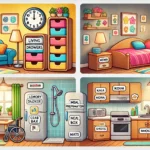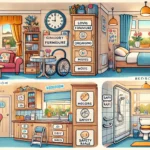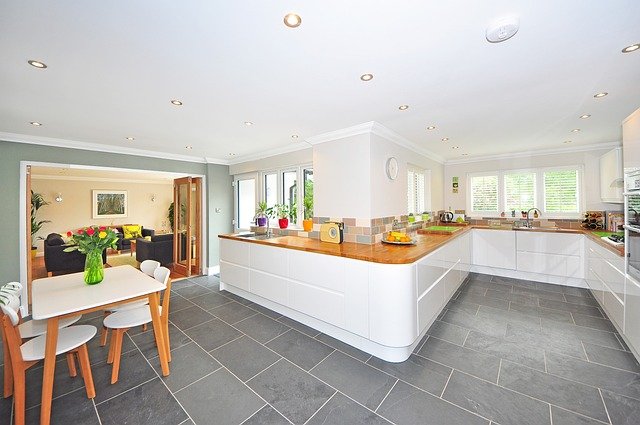Designing a safe, secure, and dementia-friendly home environment with visual aids fosters independence and enhances well-being. As dementia progresses, individuals may struggle with everyday tasks and experience confusion. Visual aids can help simplify their surroundings, making daily life more manageable. In this blog, we’ll explore how to use visual aids effectively to create a supportive environment through Dementia Care at Home.

Why a Dementia-Friendly Home Environment Matters
Dementia is a progressive condition that impacts memory, thinking, and behaviour. Over time, people with dementia may feel disoriented or anxious. A dementia-friendly home environment can provide structure, reduce stress, and help individuals maintain independence. By integrating visual aids into home design, you create a space that supports their unique needs. Dementia Care at Home ensures these environments are tailored to enhance quality of life.
20 Key Principles of a Dementia-Friendly Home Environment
Creating a dementia-friendly home environment requires thoughtful consideration of the unique needs and challenges faced by individuals with dementia. Here are key principles to guide you:
- Safety First: Ensure the home is free of hazards. Remove tripping risks like loose rugs, secure electrical cords, and install grab bars in bathrooms. Use childproof locks on cabinets containing harmful substances.
- Clear Pathways: Arrange furniture to allow easy movement. Avoid clutter, and ensure hallways and rooms are well-lit.
- Familiarity Matters: Decorate with personal items like family photos or familiar objects to evoke a sense of comfort and belonging.
- Simple and Organized: Keep things simple and in predictable places. Label drawers and cupboards with pictures or words to help with recognition.
- Contrasting Colors: Use contrasting colours for furniture, walls, and floors to make items easier to distinguish.
- Safe Kitchen Setup: Remove sharp objects and hazardous appliances. Use appliances with automatic shut-off features.
- Comfortable Spaces: Create cosy spots with comfortable chairs and soft lighting to encourage relaxation.
- Accessible Bathrooms: Install non-slip mats and contrasting toilet seats to make bathrooms safer and more navigable.

- Routine Reminders: Place clocks, calendars, and whiteboards in visible areas to help maintain daily routines.
- Quiet Zones: Designate areas free from noise and distractions where the person can retreat when overwhelmed.
- Stimulating Activities: Provide puzzles, books, or music that align with the person’s interests to keep them engaged.
- Memory Aids: Use signs, labels, and pictures to help the person navigate and recall important items or spaces.
- Natural Light: Maximize exposure to natural light to support circadian rhythms and improve mood.
- Minimize Reflections: Avoid mirrors or reflective surfaces that might confuse or frighten the person.
- Consistent Layout: Avoid frequent rearrangements to help the person navigate their environment with confidence.
- Personalized Decor: Incorporate items that reflect the person’s personality and life history to foster familiarity.
- Technology Assistance: Use motion-sensor lighting, GPS trackers, or voice-activated assistants to enhance safety and support.
- Comfortable Temperature: Maintain a consistent and comfortable indoor temperature to prevent confusion or discomfort.
- Pet-Friendly Spaces: If applicable, ensure pets have designated areas that are safe and accessible.
- Outdoor Access: Provide a safe outdoor area for fresh air and gentle exercise.
By following these principles, you can create a supportive and empowering home environment for someone living with dementia.

Using Visual Aids in a Dementia-Friendly Home Environment
Visual aids help individuals navigate their home, understand routines, and feel in control. Let’s explore practical ways to integrate visual aids with Dementia Care at Home.
Signage and Labels
Clear labels and signs can guide individuals around the house. For example:
- Doors: Add bold text and images, such as a picture of a toilet on the bathroom door.
- Cabinets and Drawers: Label kitchen cabinets with words and pictures, like “Dishes” with a plate image.
- Light Switches: Use labels such as “Kitchen Lights” to clarify each switch’s function.
Colour Coding
Colour coding simplifies organization and navigation. Here’s how to use it effectively:
- Room Identification: Paint doors in different colours to make rooms easily recognizable.
- Storage: Use colour-coded bins for items like medications, grooming tools, or documents.
- Kitchenware: Assign colours to utensils and cutting boards, like green for vegetables and red for meats.
Memory Aids
Memory aids help individuals recall routines and personal connections:
- Memory Boards: Display calendars, clocks, and daily schedules in a central location, like the kitchen.
- Photo Displays: Arrange labelled family photos in visible areas to strengthen personal connections.
- Life Story Books: Include photos and keepsakes to help individuals reconnect with their past.
Routine and Activity Schedules
Maintaining routines reduces anxiety and provides stability. Visual schedules can outline daily activities and special events:
- Picture Schedules: Show tasks like meals and bathing with simple images.
- Activity Calendars: Highlight appointments and leisure activities with icons to keep individuals engaged and oriented.
Dementia Clocks and Calendars
Help individuals stay oriented with easy-to-read clocks and calendars:
- Day and Night Clocks: Show time and whether it’s day or night to maintain sleep routines.
- Digital Displays: Include the time, date, and part of the day (e.g., morning or evening).
Final Thoughts on Dementia-Friendly Home Environments with Visual Aids
Creating a dementia-friendly home environment with visual aids is about more than safety—it’s about preserving dignity, independence, and well-being. By using visual aids like signage, colour coding, memory tools, and schedules, caregivers can foster a supportive space. Providing dementia care at home ensures that loved ones thrive in an environment tailored to their needs. Transforming a home into a dementia-friendly space not only reduces confusion but also empowers individuals to live comfortably and confidently.
“Get trusted advice on dementia care at home and practical tips for caring for someone with dementia at home—all in one place.”

